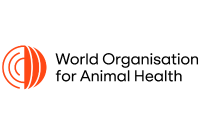World Organisation for Animal Health
Newcastle disease (ND) is a highly contagious and often severe disease found worldwide that affects birds including domestic poultry. It is caused by a virus in the family of paramyxoviruses. It usually presents as a respiratory disease, but depression, nervous manifestations, or diarrhoea may be the predominant clinical form. ND, in its highly pathogenic form, is a disease listed in the World Organisation for Animal Health (WOAH, founded as OIE) Terrestrial Animal Health Code and must be reported to the organisation.
ND is a minor zoonosis (disease of animals that can also infect humans) and can cause conjunctivitis in humans, but the condition is generally very mild and self-limiting.
Found throughout the world, this disease has been currently controlled in Canada, the United States and some western European countries. It continues in some parts of the Asia. However, since wild birds can sometimes carry the virus without becoming ill, outbreaks can occur anywhere that poultry is raised.
In Asia and the Pacific, there are 3 WOAH Reference Laboratories for NDV, which are located in Australia, China and Korea. They can provide scientific and technical training for personnel from Members and coordinate scientific and technical studies in collaboration with other laboratories or organisations, including through the organisation’s Laboratory Twinning programe. Asia Pacific Members have been submitting NDV samples (free-of-cost) for disease confirmation and further molecular characterization in these reference laboratories. This activity has greatly strengthened disease diagnosis, surveillance, and implementation of control activities.
